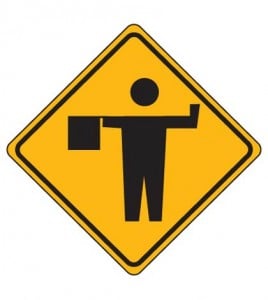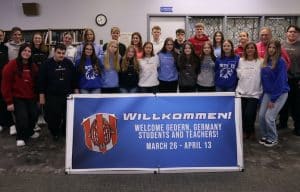Vintage baseball brings history to life
It is an ultra-competitive, multi-billion dollar industry today, but baseball has much more humble roots tracing back to the Civil War days in the fields of 19th century America.
Aiming to preserve that innocent Americana essence from which the sport evolved, a handful of vintage baseball teams gather across the St. Louis area most weekends from March to early November.
Two such teams, the Belleville Stags and St. Louis Perfectos, will play baseball in its purest form on the grassy area in front of Gibault Catholic High School in Waterloo this Saturday starting at 11:30 a.m. There will be two seven-inning games. Admission is free to the public.
The event is being showcased as part of the “Hometown Teams” traveling Smithsonian sports history exhibit, which opens Saturday at 10 a.m. inside the Monroe County History Museum at 724 Elaine Drive in Waterloo.
“I think most people don’t understand where baseball came from,” said Todd “Dutch” Eschman, who helped form the Stags in late 2011 after taking in a vintage game between the Perfectos and St. Louis Unions under the Gateway Arch that fall. “In the 1860s, it was a gentleman’s game; it was a very social experience.”
Vintage players, or ballists, as they call themselves, refer to the game as “base ball,” a two-word ancestor of the modern one-word version. Teams such as the Stags, Perfectos and Unions and St. Louis Brown Stockings play for the love of the game the way it used to be played.
The ballists each have their own unique nickname, in keeping with the early days. On the Stags roster, there’s “Dutch,” “Rooster,” “Mule,” and “Scrap Iron,” just to name a few.
“Forget about what you think you know about baseball today,” Eschman said. “Guys coming back from the Civil War would introduce it to locals back home, and it just spread from there. In the 1860s, it was middle class businessmen getting together on weekends for fun, just socializing.”
Vintage teams can follow any set of past rules from different eras, but most area teams follow the rules written in 1860.
The most noticeable difference from today’s game is that vintage players do not use gloves, which were not standard equipment until the early 1890s.
The pitcher, or “hurler,” throws underhand with the intent of putting the ball where the batter, or “striker,” wants it.
Wherever the ball, which is slightly larger and heavier than today’s baseball, hits the ground first determines whether it’s fair or foul. It could hit just in front of home plate and roll into foul territory, but it would still be fair. It may even strike a tree in foul territory, bounce back into play and be considered fair.
A ball can be caught by a fielder on one bounce and still be considered a fly out. It’s still three strikes you’re out, but called strikes are up to the discretion of the umpire, or “arbiter.”
And the arbiter doesn’t typically call strikes unless, in his opinion, the hitter has stood there watching too many good pitches go by. It takes six balls to draw a walk.
Some of the basic baseball rules still apply — there are still nine players on the field and 90 feet between bases.
For Eschman and the other vintage players, the game is more about building friendships and getting a little exercise rather than showing off athletic
prowess.
“When forming the Stags, I started with people I thought were good guys first,” he said. “We play hard and compete, and just respect the game and its tradition.”
Eschman, 44, of Swansea, played baseball in his younger years and then got into playing softball. But, to him, slow pitch softball “just wasn’t fun” and was a “poor substitute” for the game he has loved since childhood.
The same goes for Eschman’s teammate, Paul “Rooster” Mentzer, 43, of Swansea. He also played baseball at the high school level and beyond before delving into softball.
“I just could not really enjoy myself playing softball,” Mentzer said. “With the vintage game, it brought it all back and gave me the opportunity to play baseball again.”
As for the vintage game, Mentzer views it as history being brought to life.
“It’s a living history lesson, really,” he said. “People watch it in amazement because they didn’t realize baseball was played in an organized fashion that long ago.”
In keeping with the social nature of the vintage game, the players encourage those in attendance to talk with players and even throw the ball around or take a couple of swings.
And that is why Saturday’s vintage game fits in well with the Smithsonian’s Hometown Teams exhibit at the history museum.
“Baseball brought the community together in many of the small towns of this area and became a source of local pride,” Eschman said. “That is what we’re all about.”
Those attending Saturday’s rare local glimpse into baseball past can hear the crack of the bat and joyful chatter amongst players as they sit under the shade, taking in the glory of America’s pastime.
“I really hope it takes them back 150 years,” Eschman said. “It brings life to its simplest terms: friends, family and fun.”
For more information on the Belleville Stags, visit http://bellevillestags.com.
Also as part of Saturday’s vintage doubleheader, Rawlings will have a trailer showcasing the history of baseball on site at Gibault.
For a full listing of events scheduled as part of the Hometown Teams exhibit, visit www.monroecountyhistorymuseum.com.






